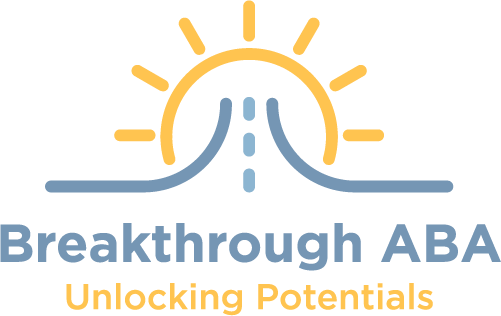Published by Breakthrough ABA
————————-
Why Potty Training Can Be Challenging for Children With Autism
Potty training is a major milestone in childhood development—but for many children with autism, it can come with extra challenges. These may include communication difficulties, sensory sensitivities, anxiety, or trouble recognizing body signals.
At Breakthrough ABA, we understand that every child is different. That’s why we use the science of Applied Behavior Analysis (ABA) therapy to develop structured, supportive, and personalized potty training plans that lead to success.
How ABA Supports Potty Training Success
ABA therapy helps children learn new skills by breaking them down into small, teachable steps. When it comes to potty training, this approach is especially effective because it:
- Provides clear routines and expectations 🧻
- Uses reinforcement to encourage progress 🎉
- Builds independence in toileting skills 🚽
Here’s how ABA therapists guide families through the potty training process:
Step 1: Individualized Assessment 📝
Before beginning toilet training, a Board-Certified Behavior Analyst (BCBA) assesses:
- The child’s current toileting habits
- Communication methods (e.g., verbal requests, picture exchange)
- Sensory issues (e.g., fear of flushing, bathroom noises)
- Readiness indicators (staying dry for 1–2 hours, showing discomfort when wet)
This helps the therapist design a plan that fits your child’s abilities and routines.
Step 2: Creating a Toileting Routine ⏰
Consistency is key. The therapist works with caregivers to build a daily potty schedule that includes:
- Scheduled bathroom visits (e.g., every 30–60 minutes)
- Encouraging sitting on the toilet, even if the child doesn’t go right away
- Using visual supports or social stories to explain expectations
- Keeping data on dry pants, successful voids, and accidents
ABA therapists help track this progress to identify patterns and adjust the plan accordingly.
Step 3: Reinforcement That Works 🏆
Instead of using punishment or pressure, ABA therapy focuses on positive reinforcement. This might include:
- Praise and high-fives
- Access to a favorite toy or game after using the toilet
- Earning tokens toward a larger reward (like a trip to the park)
The key is to use reinforcers that are meaningful to your child and delivered immediately after success.
Step 4: Teaching Communication Skills 💬
Some children with autism struggle to indicate when they need to go. ABA therapists teach children to:
- Request the bathroom using words, signs, or communication devices
- Respond to bathroom cues (like a picture symbol or timer)
- Understand how their body feels before needing the toilet
This empowers children to become more independent and less reliant on adult prompting.
Step 5: Generalizing Potty Skills Across Environments 🏠🏫
The final goal of ABA potty training is to help your child use the toilet successfully:
- At home 🏡
- In public bathrooms 🚻
- At school or daycare 🏫
- With different caregivers or settings 👨👩👧
Therapists support families in helping children transfer skills across these environments, preventing regression and building long-term success.
Tips for Families Starting ABA Potty Training 👪
- Stay consistent—follow the same routine every day.
- Be patient—progress may be slow but steady.
- Celebrate small wins—every success counts!
- Collaborate with your ABA team—share updates and ask questions often.
- Avoid shaming or punishment—mistakes are part of the learning process.
Final Thoughts: ABA Makes Potty Training Possible
Toilet training doesn’t have to be overwhelming. With the structure, support, and science behind ABA therapy, many children with autism make meaningful, lasting progress.
At Breakthrough ABA, we work with families across the Greater Houston area to develop personalized, compassionate potty training plans that build confidence and independence—one flush at a time. 🚽💙
